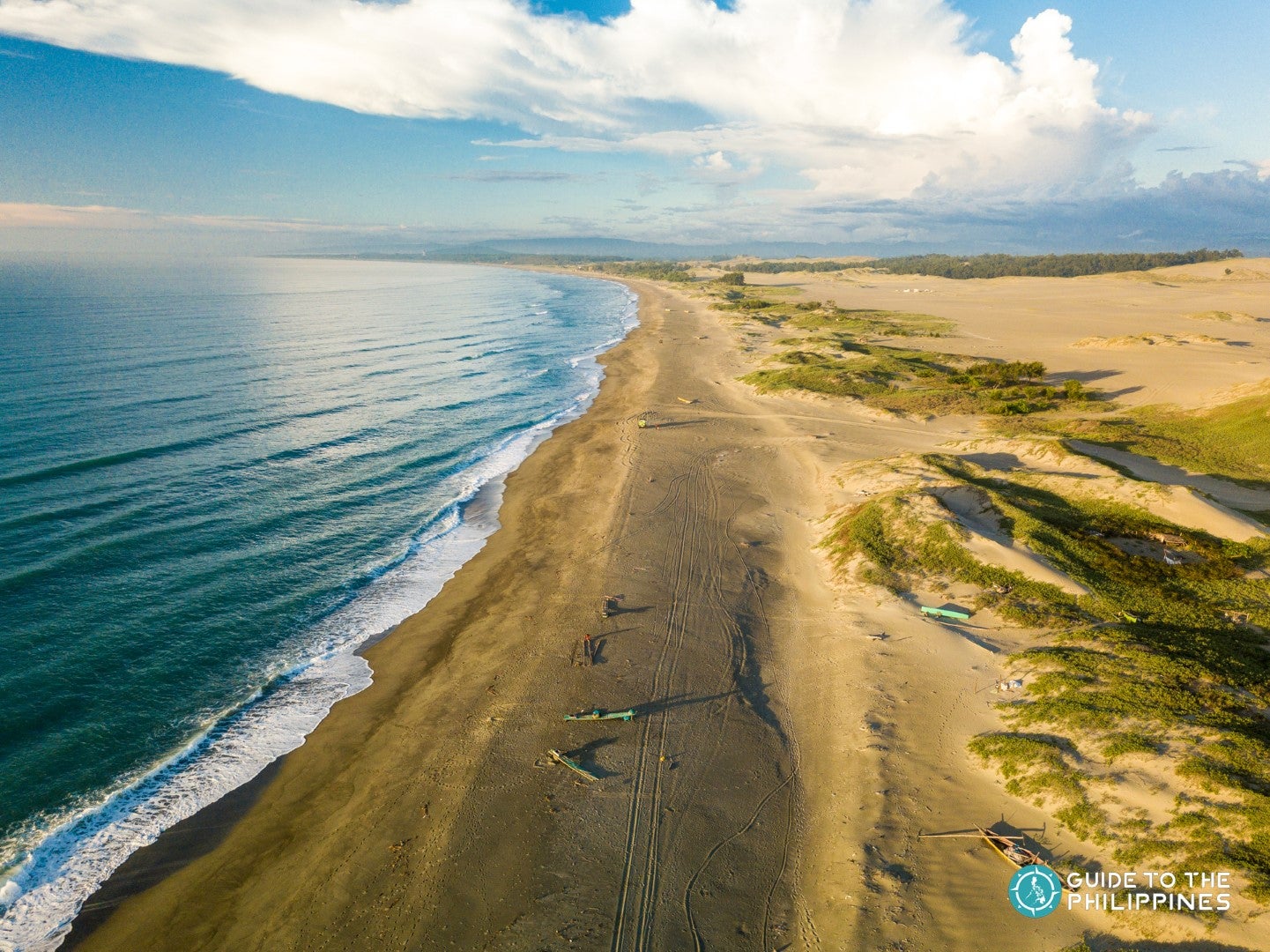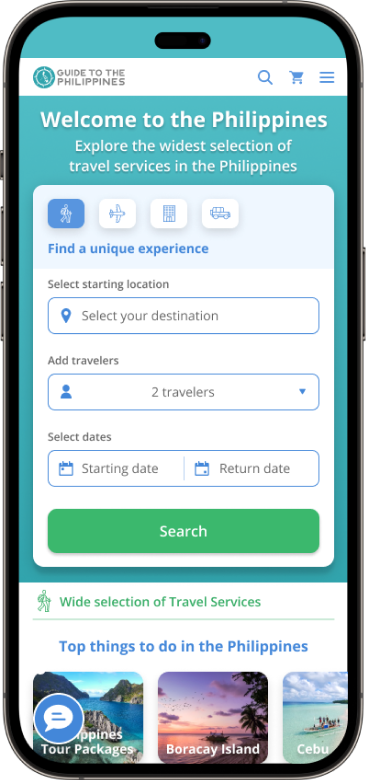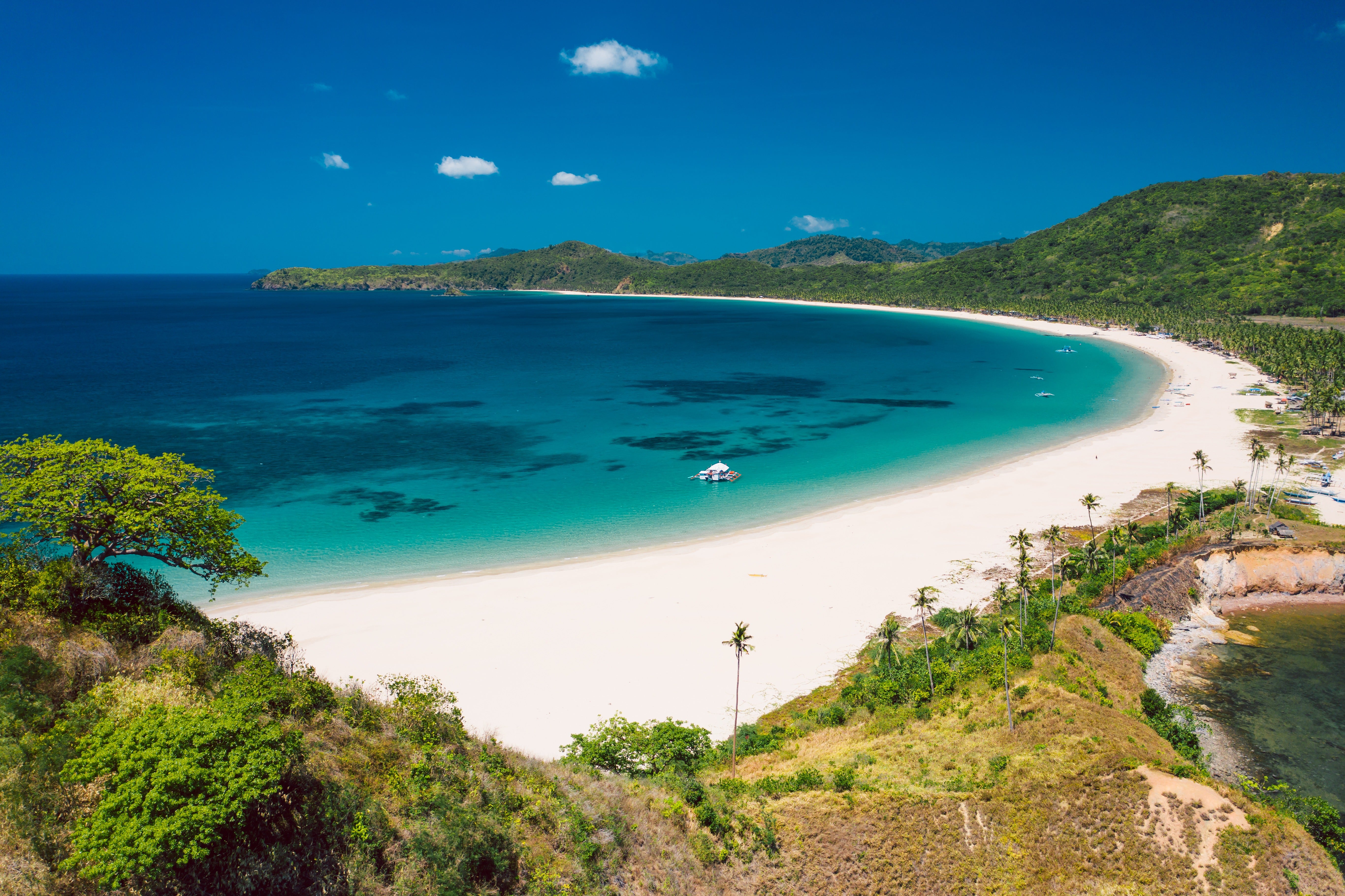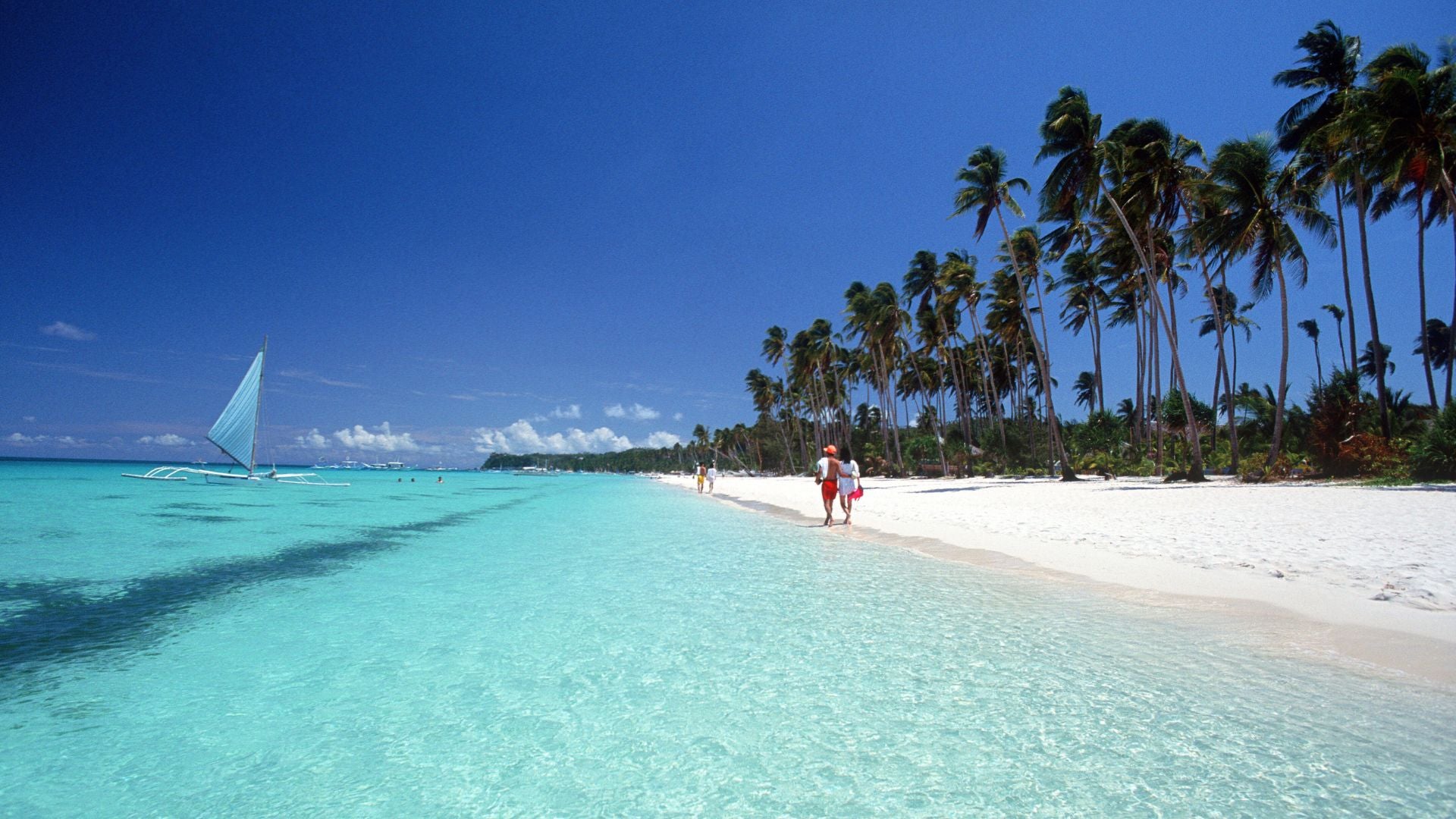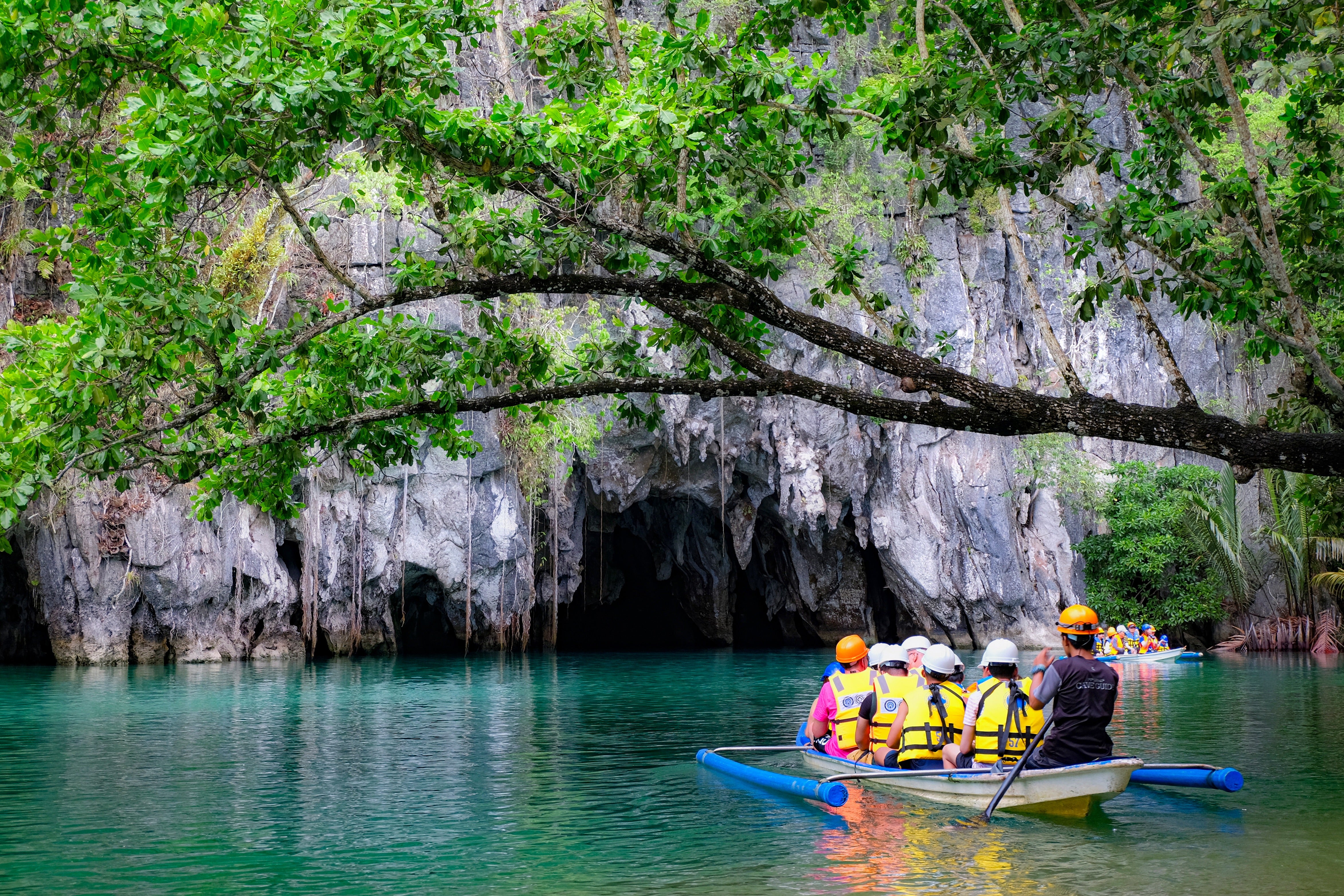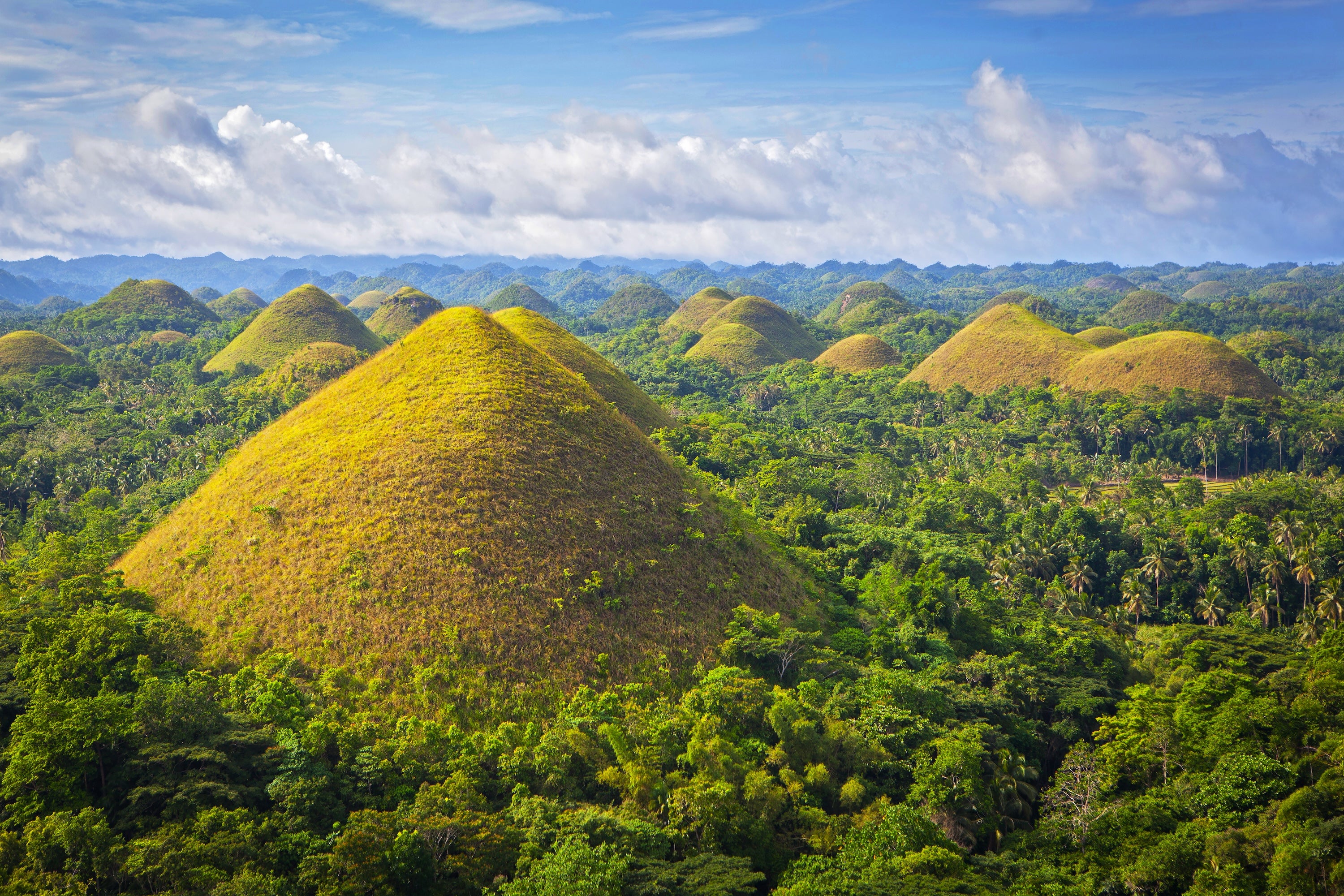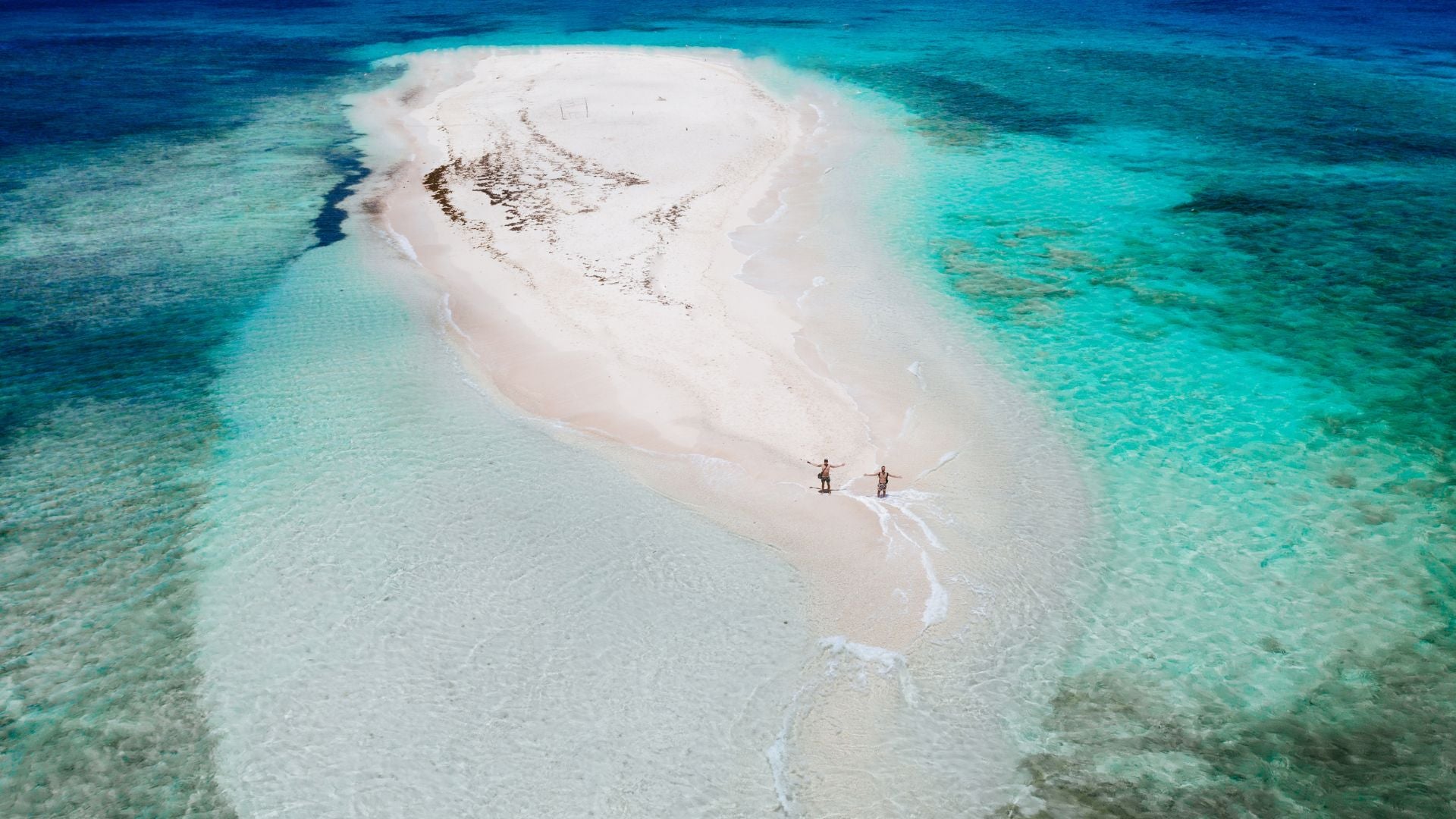One such destination that has captured global attention in recent years is Buscalan Village in the Province of Kalinga, located in North Luzon region. Tucked away in the Cordillera mountains, this quiet village has become a bucket-list destination for travelers eager to meet and get inked by Apo Whang-Od, the oldest traditional tattoo artist in the Philippines.
Born in 1917, Whang-Od is a mambabatok, a traditional Kalinga tattooist who uses indigenous hand-tapping techniques passed down through generations.
While revered locally for decades, Apo Whang-Od’s artistry reached an international audience when she was featured on the cover of Vogue Philippines in 2023, becoming the magazine’s oldest cover star at the age of 106.
Her story has since inspired thousands of adventurers, cultural enthusiasts, and artists to make the trek up the mountains to see her and learn more about the ancient tradition of batok tattoos.
If you’re planning a journey to this remarkable highland village, this Buscalan travel guide will walk you through everything you need to know—from how to get there and what to expect, to practical tips for meeting Apo Whang-Od and experiencing the magic of the tattoo village of Kalinga.
Key Takeaways
-
Buscalan Village in Kalinga Province is one of the most unique cultural destinations in the Philippines, drawing travelers from around the world for its rich indigenous heritage and scenic mountain setting.
-
The remote mountain location of Buscalan Village in Kalinga Province is home to Apo Whang-Od, the Philippines’ oldest traditional tattoo artist and a living cultural icon who helped preserve the ancient art of batok hand-tapped tattoos.
-
The easiest and most convenient way to visit Buscalan Village is through a guided tour package from Manila City, which includes roundtrip transport, local guides, and accommodations.
-
Public transportation routes from Manila City, Baguio City, or Bontoc Town are also available for adventurous travelers, but require multiple transfers and a 30–45-minute uphill hike.
-
Homestays are the only type of lodging available in the village, offering basic amenities, native coffee, and warm hospitality from local families.
-
Getting a tattoo from Whang-Od or her apprentices is a deeply meaningful experience, with traditional patterns that reflect the identity and heritage of the Kalinga people.
-
Visitors can also enjoy Buscalan’s rice terraces, murals, native coffee, and cultural delicacies like etag pork, even without getting a tattoo.
-
Bring cash, pack light, and prepare for a digital detox, as there is no internet or reliable signal in the village.
-
For a hassle-free cultural journey, book Buscalan tour packages or North Luzon cultural trips with Guide to the Philippines to experience the best of the Cordillera region.
Where is Buscalan Village located and how do I get there?

Nestled high in the Cordillera mountains, this tranquil village is best known as the home of Apo Whang-Od, the Philippines’ oldest and most iconic traditional tattoo artist. While the journey may be long and rugged, many travelers find it worthwhile for the unique cultural experience.
You can get to Buscalan Village via public transportation or a guided tour package from Manila City. Here are your options:
Best Option for International Travelers: Guided tour package from Manila City

A Buscalan village package typically includes:
-
Private roundtrip transportation from Manila City, so you won’t need to navigate confusing terminals or coordinate bus-jeepney-motorcycle transfers on your own.
-
Homestay accommodations in Buscalan village, pre-arranged for your comfort and convenience.
-
A local guide and tour coordinator, who will assist with your tattoo appointment with Apo Whang-Od or her apprentices, guide you through the hike, and help you better understand the local culture.
This option is ideal for international travelers who may be unfamiliar with local transport systems, or for those who want to make the most of their time without worrying about logistics.
Public transportation from Manila City
For adventurous travelers, taking public transportation to Buscalan Village offers flexibility and a deeper immersion into the journey.
Via Tabuk City
-
Victory Liner buses operate from their Kamias terminal in Quezon City to Tabuk City in Kalinga Province, with departures typically in the evening.
-
From Tabuk City, hop on a jeepney bound for Bugnay, a village closer to the trailhead.
-
Once in Bugnay, ride a habal-habal (motorcycle taxi) to reach the jump-off point to Buscalan.
-
From the jump-off, enjoy a 30 to 45-minute uphill hike to reach the village.
Via Bontoc Town
-
Head to Coda Lines terminal in Cubao district of Quezon City, which offers night trips to Bontoc town in Mountain Province, located south of Kalinga.
-
The trip takes about 12 hours, and you’ll arrive in the morning.
-
Upon arrival in Bontoc town, ride a jeepney going to Buscalan village's jump-off point.
-
You’ll need to hike uphill the rest of the way to enter the village.
Tip: Both routes offer scenic views along the way, but Bontoc is a great option if you’re combining Buscalan with a trip to nearby Sagada, a small highland town with scenic attractions. For a hassle-free trip, check out this pre-arranged Sagada & Buscalan tour package.
Public transportation from Baguio City
If you’re already in Baguio City, a popular mountain retreat in North Luzon region known for its cool climate and scenic views, here’s how to get to Buscalan village:
-
Take a bus from the Slaughterhouse Terminal along Magsaysay Avenue in Baguio City bound for Bontoc town. The ride takes around 6 hours through winding mountain roads.
-
Upon arrival in Bontoc, ride a jeepney to Bugnay, the jump-off point to Buscalan Village.
-
At the Bugnay village jump-off, hire a local guide and begin the 30 to 45-minute uphill hike to reach Buscalan.
Where to Stay in Buscalan Village?
Buscalan is a remote mountain village, so don’t expect typical hotel comforts or resort amenities. Instead, visitors are welcomed into local homestays, where you’ll be sharing space with a host family. These simple accommodations offer an authentic cultural experience and a chance to slow down and embrace the laid-back mountain life.
-
Homestay rates typically range from PhP350 to PhP500 per night and include a place to sleep, usually with a mattress and bedding. Many homestays offer free-flowing native coffee and rice as part of their hospitality.
-
There are small local eateries in the village where you can order home-cooked meals. Some homestays may also prepare food for you upon request, usually for an additional fee.
-
If you prefer to cook your own meals, you’re welcome to use the homestay kitchen. It’s best to bring canned goods or ready-to-cook food from the city, as grocery options in the village are very limited.
-
Keep in mind that there is no WiFi in Buscalan Village, and mobile signal is extremely weak or unavailable in most parts of the village. This digital detox is part of the experience—use the opportunity to connect with locals, learn about their traditions, and enjoy the peaceful mountain setting.
Staying in Buscalan is not about luxury—it’s about immersion, simplicity, and respect for local culture. Come with an open mind, and you’ll leave with unforgettable memories.
Why is Apo Whang-Od famous? How Old is Apo Whang-Od?

Whang-Od is celebrated not just for her age but for her role in preserving the centuries-old tradition of batok, the hand-tapped tattooing method practiced by the Kalinga people. Using a pomelo thorn attached to a bamboo stick called a pambatok, she taps a mixture of charcoal and water into the skin—an intricate, manual process that is more painful than modern machine tattoos but deeply meaningful.



How Much is an Apo Whang-Od Tattoo?
Getting a traditional batok tattoo in Buscalan Village is more than just a souvenir—it’s a meaningful cultural experience. Prices vary depending on the size and intricacy of the design, as well as who performs the tattoo.
Note: Prices mentioned are approximate and may change over time. It’s best to bring extra cash and ask your local guide for the most updated rates during your visit.
-
Apo Whang-Od’s signature three-dot tattoo costs around PHP 300. This minimalist design is symbolic and highly sought after by visitors.
-
Small traditional patterns also start at PHP 300, while larger and more intricate designs—like full sleeves—can cost up to PHP 50,000.
-
You’ll also need to purchase a pambatok (tattoo tool made of bamboo and pomelo thorn) for PHP 200, which serves as a unique memento from the experience.
Before your session, you’ll be shown a selection of traditional Kalinga tattoo designs, each with its own cultural significance, so it’s important to choose one that feels personally meaningful.
Tattoo duration varies:
-
Apo Whang-Od’s three-dot tattoo takes just about 5 minutes.
-
Small designs may take 10–15 minutes.
-
Complex designs like full sleeves may require several days, so plan to stay longer in Buscalan village if this is what you want.
Tattoos are given on a first-come, first-served basis. The wait to get inked by Apo Whang-Od can be long—or not guaranteed. Most visitors today receive tattoos from her grandnieces and other younger mambabatok artists who continue this living tradition.
Photos with Apo Whang-Od typically require a minimum PHP 100 fee, which helps support the local community.
Other fees to consider:
-
Guide fee: PHP 1,000 (day trip) or PHP 1,500 (overnight), good for up to 5 people
-
Environmental fee: PHP 75
-
Eco-cultural tourism fee: PHP 75
Frequently Asked Questions About Getting a Tattoo from Apo Whang-Od

Below are some of the most commonly asked questions about the tattooing experience in Buscalan village to help you prepare for your visit and make the most of this once-in-a-lifetime encounter with the living legend of Kalinga.
1.Can I get a tattoo from Apo Whang-Od without a prior appointment?
No appointments are taken in advance. Tattoos are done on a first-come, first-served basis, and depending on the number of visitors that day, you may have to wait several hours. Arriving early or staying overnight increases your chances of meeting her.
2.Will I definitely be tattooed by Apo Whang-Od?
Not always. Due to her age, Whang-Od’s availability may vary daily. She now mostly performs her signature three-dot tattoo, while larger and more detailed designs are typically done by her grandnieces Grace and Elyang or other younger mambabatok from the village.
3.Is it safe to get a tattoo in Buscalan Village?
Yes, the practice is safe. Each tattoo artist uses a new pambatok tool for every client, and hygiene is observed. However, because traditional tattoos involve open skin and natural pigments, it’s important to keep your tattoo clean and dry afterward to avoid infection.
4.Does it hurt more than a modern tattoo?
Yes. Since traditional tattoos are hand-tapped using a thorn and bamboo stick, most people report it being more painful than machine-done tattoos. However, the pain is usually tolerable and is often considered part of the meaningful experience.
5.How should I care for my tattoo afterward?
Aftercare is crucial. Basic tips include:
-
Keep it clean and dry for the first 24–48 hours
-
Avoid applying commercial ointments unless advised
-
Do not scratch or pick the tattoo
-
Avoid swimming or soaking the tattoo
Your guide or homestay host can offer local advice for healing.
6.Can I choose my own tattoo design?
You can select from a range of traditional Kalinga tattoo patterns, each with its own meaning (e.g., protection, strength, beauty). Visitors are encouraged to respect the cultural significance of each design rather than choosing purely for aesthetics.
7.Are tattoos from Buscalan Village permanent?
Yes, these are permanent tattoos, just like those done with a modern tattoo gun. Make sure you're fully committed before receiving one.
8.Do I need to be of legal age to get tattooed in Buscalan?
While there’s no formal ID check, it’s strongly advised that you are at least 18 years old. Minors should be accompanied by a guardian who gives consent.
9. Can I visit Buscalan Village without getting a tattoo?
Absolutely. While many travelers visit Buscalan Village to receive a traditional tattoo, getting inked is not required to enjoy the experience. The journey to Buscalan Village is rewarding in itself—offering breathtaking mountain scenery, peaceful surroundings, and meaningful cultural encounters with the Butbut tribe.
You can explore the village, observe the tattoo process, learn about the Kalinga people's heritage, and interact with the locals, including Apo Whang-Od, even if you choose not to get a tattoo. Just be respectful of the space and traditions, and consider supporting the community through local guide services, homestays, or by purchasing handmade crafts.
What to do in Buscalan Village?

Admire the Rice Terraces and Cool Off at a Waterfall

After your morning walk, cool down at a small local waterfall nearby. While modest in size, the natural pool below the cascade is refreshing—perfect for a quick dip in the afternoon.
Sip a Cup of Strong Buscalan Coffee
Coffee lovers are in for a treat. Buscalan Coffee, often served for free in homestays, is brewed with care using a simple yet distinct method—boiled in a cooking pan and sweetened with brown sugar. Its strong, bold flavor is a reflection of the village’s rustic charm. You can enjoy a cup at a local eatery or bring home a pack of ground beans as a souvenir from your trip.
Explore the Village Murals

Try the Local Delicacy: Etag
Etag is a traditional Cordilleran preserved pork dish that reflects the mountain region’s heritage. In Buscalan Village, slabs of pork are cured and then smoked or air-dried, resulting in a salty, smoky flavor that pairs well with rice. If you're lucky, your homestay host or a local eatery may serve this delicacy—don’t pass up the chance to try it.
Support the Locals by Buying Souvenirs

Nearby Destinations to Visit from Buscalan Village
If you’re planning a longer trip to North Luzon, you can explore more of the region’s scenic highlands and rich cultural heritage. The Cordillera region is home to breathtaking rice terraces, cool-climate cities, and rich indigenous cultures that offer a completely different travel experience from the usual beach destinations.
For a seamless and more enriching vacation, check out these North Luzon tour packages that cover multiple destinations, including cultural and natural attractions across the region.
Here’s what you can explore before or after your trip to Buscalan Village:
Baguio City

To experience the best the city has to offer, you can book Baguio tours that highlight both cultural sites and nature spots. For a more convenient getaway, check out Baguio tour packages that already include accommodations, transportation, and guided activities.
Sagada Town

For a more immersive visit, check out these Sagada tours that take you through the town’s top cultural and natural attractions.
Banaue Town

To see all three destinations in one trip, consider booking Baguio-Sagada-Banaue tour packages, which includes transportation, accommodations, and guided experiences—perfect for hassle-free highland exploration before or after your Buscalan visit.
Sample Itinerary for Buscalan Tattoo Village

Day 0: Evening Departure from Manila City
-
7:00 PM – Begin your overnight journey from Manila City aboard a comfortable private van. Rest well as you head north toward the Cordillera mountains.
Day 1: Arrival and Tattoo Experience in Buscalan Villae
-
4:00 AM – Stopover for a warm local breakfast before continuing the journey. Fuel up—it’s your last big meal before the trek!
-
9:30 AM – Arrive at the jump-off point and begin your scenic 30–45-minute hike up to Buscalan Village.
-
10:30 AM – Check-in at your assigned homestay and settle into your home for the night.
-
12:00 PM – Enjoy a simple yet hearty lunch prepared by your host or dine at a local eatery.
-
1:00 PM – Begin your tattoo session with a mambabatok or explore the village at your own pace. You can check out the murals, taste Buscalan coffee, or meet the locals.
-
6:00 PM – Cap the day with a traditional dinner at your homestay or one of the village eateries.
Day 2: Morning in the Village + Return to Manila City
-
6:00 AM – Wake up to fresh mountain air and enjoy a hot breakfast, often served with native Buscalan coffee.
-
8:00 AM – If you weren’t able to get a tattoo the previous day, this is your chance. Otherwise, continue exploring the village or simply enjoy the peaceful surroundings.
-
10:30 AM – Begin your descent from the village and prepare for the ride back to the city.
-
2:00 PM – Optional stop at the Banaue Rice Terraces Viewdeck for photos and a quick cultural side trip.
-
10:00 PM – Estimated arrival back in Manila City, filled with unforgettable memories and (possibly) fresh ink.
Travel Tips for Visiting Apo Whang-Od in Buscalan Tattoo Village

Nestled high in the Cordillera mountains, this rural village demands a bit of preparation to make your trip safe, comfortable, and memorable. Here are some essential travel tips to help you make the most out of your journey:
Visit During the Dry Season (December to May)
For a smooth and safer journey, plan your trip during the dry season. This period offers clear skies and stable roads—essential when traveling through the steep, winding trails to Buscalan Village. Most of the village’s attractions, like the rice terraces, waterfalls, and murals, are outdoors and best enjoyed when the weather is pleasant.
Schedule Based on Your Tattoo Design
Tattoos in Buscalan Village are done on a first-come, first-served basis, and the number of visitors can be unpredictable, especially after Whang-Od’s international fame. If you're getting a large or intricate tattoo, it may require multiple sessions or even a week-long stay. For shorter queues, aim to visit on weekdays, as weekends tend to be busier.
Pack Light but Smart
Since the last leg of your journey includes a 30–45-minute uphill hike, travel with a light backpack containing just the essentials—comfortable clothes, basic toiletries, water, snacks, and power banks. Remember, your guide is there to lead you, not to carry your bags, so pack only what you can comfortably manage.
Bring Enough Cash
There are no ATMs or banks in Buscalan Village, and all payments for tattoos, food, souvenirs, and local services are in Philippine Peso cash only. Be sure to withdraw sufficient money from a city like Baguio, Bontoc, or Tabuk before heading up. It’s better to bring a little extra than to find yourself short on funds in a cash-only village.
Prepare for a Digital Detox
There is no mobile signal or Wi-Fi in Buscalan. Inform your family and friends ahead of time that you’ll be out of reach during your stay. Download or print copies of important travel documents, including tour vouchers and IDs, since you won’t be able to access them online once in the village.
Plan Your Trip to Buscalan Village for a Hassle-Free Experience
There are many ways to experience the rich cultural tapestry of the Philippines, but few are as profound as immersing yourself in the daily life of a remote mountain village like Buscalan. Here, you’re not just observing local traditions—you’re living them. You’ll share meals in local homes, sip strong native coffee, and, if you choose, carry a piece of Kalinga heritage with you through a hand-tapped batok tattoo from one of the mambabatok.
Even if you're not getting inked, Buscalan Village remains one of the most unforgettable places to visit in the Philippines. With its scenic rice terraces, peaceful ambiance, and living traditions, this small village offers travelers a truly meaningful escape from the usual.
For those looking to explore even more of what northern Luzon has to offer, consider pairing your trip with nearby cultural gems. Check out this 3-day Kalinga & Apayao tour package, which highlights two of the country’s most underrated provinces known for their heritage villages, untouched nature, and indigenous artistry.
Whether you go just for Buscalan Village or expand your journey to include more of the Cordilleras, your adventure to this part of the Philippines promises to be inspiring, eye-opening, and unforgettable.














